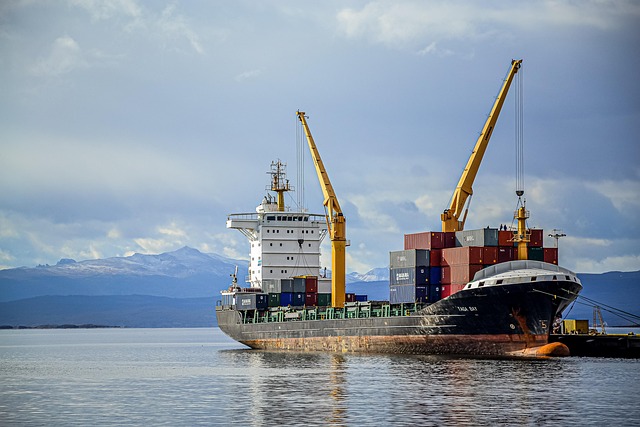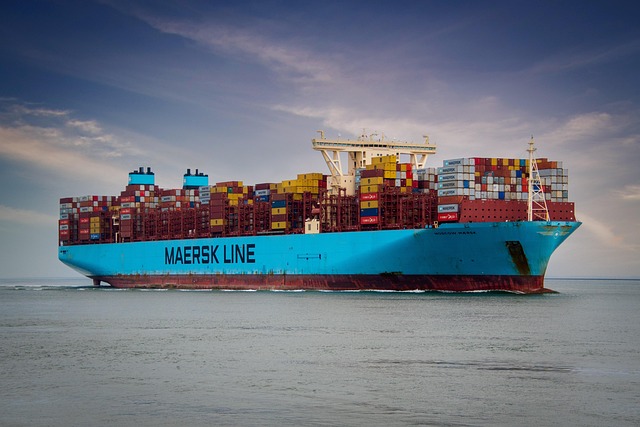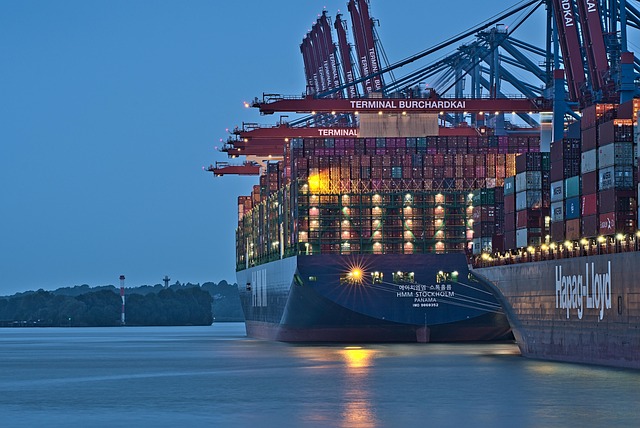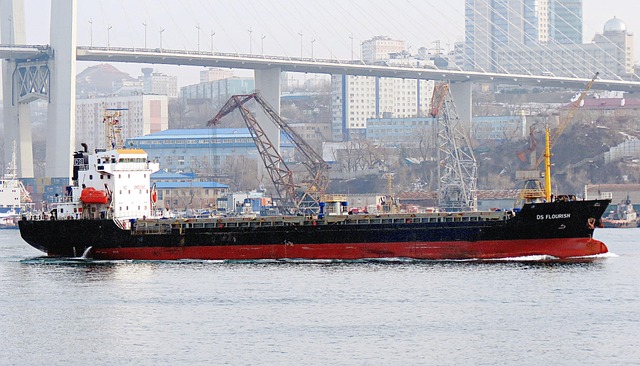The 40-foot shipping container is a logistics industry staple with precise dimensions (12.19m x 2.44m x 2.59m) enabling global compatibility and efficient bulk cargo transport. Its size offers significant space advantages over smaller containers, especially for high-volume LCL shipments. A shipping container size chart helps shippers choose the most cost-effective option based on their needs. With its adaptability and variations like refrigerated or flat rack containers, the 40ft size is a versatile workhorse in international trade. Efficient stacking and strategic placement within these dimensions maximize space utilization for bulk cargo operations.
“Unleash the potential of efficient cargo transportation with the standard 40ft shipping container—a game-changer in the logistics industry. This formidable structure offers an impressive cargo capacity, making it ideal for bulk shipping and international trade. In this comprehensive guide, we’ll explore the dimensions and benefits of the 40ft container, its versatile applications, and provide tips to optimize space. From understanding its physical attributes to leveraging its advantages, discover why this size is a top choice for large-scale cargo handling.”
- Understanding Standard 40ft Container Dimensions
- Benefits of Utilizing Large Cargo Capacity
- Applications for 40ft Shipping Containers
- How to Maximize Space Efficiency
Understanding Standard 40ft Container Dimensions

The standard 40-foot shipping container is a powerhouse in the logistics industry, renowned for its immense cargo capacity and versatility. Its dimensions, meticulously designed according to international standards, ensure uniform compatibility across global supply chains. Measuring 40 feet (12.19 meters) in length, 8 feet (2.44 meters) in width, and approximately 8.5 feet (2.59 meters) in height, this container offers a spacious interior that can accommodate a wide range of goods. The standard shipping container size facilitates efficient loading and unloading processes, making it ideal for bulk cargo transportation.
Understanding the precise dimensions is crucial when optimizing space utilization. For instance, comparing it to its smaller counterpart, the 20-foot shipping container (or even the specialized high cube sizes like 9ft6in or 20ft high cube), one can see the significant difference in usable space. The 40ft high cube container size provides an even greater interior volume for oversized or bulk items, making it a preferred choice for industries dealing with high-volume, less-than-container-load (LCL) shipments. A comprehensive shipping container size chart or guide is essential for shippers to choose the right container type based on their cargo requirements and ensure maximum efficiency during transportation.
Benefits of Utilizing Large Cargo Capacity

Utilizing large cargo capacity in the form of a standard 40ft shipping container offers numerous benefits for businesses involved in international trade and logistics. The primary advantage lies in its immense storage volume, which allows for efficient transportation of a wide array of goods, from bulky machinery to diverse merchandise. This size is particularly beneficial for companies dealing with high-volume, low-weight cargo, ensuring cost-effective shipping without compromising on space utilization.
Moreover, the 40ft container size provides flexibility and adaptability in terms of loading and unloading operations. Its spacious interior accommodates various loading configurations, making it suitable for diverse product ranges. The ISO-standardized dimensions also facilitate seamless integration with global logistics networks, ensuring smooth transit across borders without requiring specialized handling or additional packaging. This versatility contributes significantly to the overall efficiency and cost savings associated with large cargo capacities in container shipping.
Applications for 40ft Shipping Containers

The standard 40ft shipping container size is a versatile and popular choice for various applications due to its substantial cargo capacity. Its large interior dimensions, typically measuring around 8ft (2.4m) wide and 9.5ft (2.9m) high, allow for efficient loading of bulky items or large volumes of goods. This makes it ideal for international trade, where shipping a wide range of products, from machinery to vehicles, is common.
Beyond standard cargo, 40ft containers find applications in specialized sectors. Refrigerated containers, for instance, can maintain specific temperature ranges, ensuring the safe transport of perishable items like food and pharmaceuticals. Flat rack containers, on the other hand, offer an open-topped design suitable for shipping oversized or unconventional cargo that requires more exposure to the elements. These versatile sizes, along with variations like high cube options (which provide extra height) and custom container dimensions, cater to diverse industry needs, making the 40ft shipping container size a true workhorse in logistics and supply chain management.
How to Maximize Space Efficiency

Maximizing space efficiency in a standard 40ft shipping container is crucial when dealing with large cargo capacities. To start, organize and position items strategically within the container. Utilize every available inch by stacking smaller or lighter objects on top of larger ones, ensuring they are secure to prevent shifting during transit. Leverage the vertical space by installing shelves or dividers to create designated zones for different types of goods. This method not only optimizes the height but also makes loading and unloading easier.
Consider the container’s dimensions – 40ft in length, 8ft in width, and typically around 8.5-9ft in height (for standard high cube containers). Efficient packing involves using the full length for bulkier items while keeping narrower goods along the walls to avoid wasted space. Don’t forget the doors; they provide access but also create a certain footprint. Ensure door openings are utilized by placing smaller, lighter items inside them or using them as an entry point for larger equipment that needs to be loaded and unloaded quickly.
The standard 40-foot shipping container has established itself as a versatile and efficient solution for transporting large volumes of cargo. Its dimensions and capacity make it suitable for various applications, from international trade to emergency relief. By understanding the optimal utilization of this container size and implementing space-saving strategies, businesses can significantly enhance their logistics operations, ensuring cost-effectiveness and streamlined transportation.
